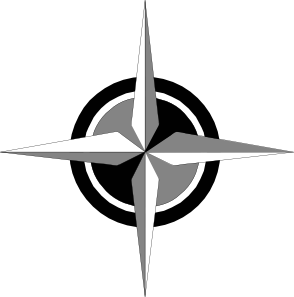Trail Management
This includes all the stuff that happens at controls, but this lesson is more people oriented.
In a badly run rogaine team, the runners feel that they are just along for the ride.
Here are some things to think about.
Define roles for people.
Everyone takes turns breaking trail. But stronger guys may take longer turns.
Pathfinding isn't the same as navigating. Navigating is big picture. Pathfinding is details. Some guys are just better at it.
*
Involve team members.
Do the route planning as a team, instead of by yourself. Often someone else will have insight into a clue. Some guys are better at pulling details out of a map. Some are better at numbers for estimating. If two or three people plot the clues, you have less chance of a mistake.
Just before the race starts give a quick rundown on the morning. What area you're workign, the types of controls.
As you leave each control for the next one, have your nav say something to the effect of "NW corner of this field, a half klick of bush to the next clearing. Control is on the NE corner of that. 25 minutes." This sort of thing keeps guys focused on one chunk at a time. Now as the trailbreakers change, they know which corner to go to. If you have a good pathfinder, and you know that the bush is likely to need his skills, then let him take his turn breaking trail, but keep his turns short.
Keep things moving. The whole thing about time management at controls was about this. Other ways:
If you have to cross a fence, spread out to do it. Put two posts between each person. If it's a tight fence that needs someone holding it then one person steps on the 2nd wire from the bottom, lifts on the wire above it, and people step through. First one through, turns around and holds for the wire holder. You may have to take off your packs and chuck them over.
If you have a big speed difference in your team, then put the slowest guy over first, and give him a direction to go. If the snow is heavy, put your best trail breaker first, and tell him to go.
If you have a gate to open and shut, have your fastest guy close the gate. He can catch up.
All of these of course, requrie that you still keep the communication rule.
About every 60 to 90 minutes stop. Make sure everyone drinks. Make sure everyone eats. If you have small kids, make it 60 for sure. Small kids have small gas tanks. Remember too: A full mouth is a quiet mouth.
15 minutes after you start, stop for couple minutes for adjustments. Most guys wear too much to start, so they will want to put stuff in their packs.
Be ready to stop when making a transition. Coming out of the woods onto a big field will often be chilly. Stop and layer up. Coming out of a shady spruce grove and into the sun will cause everyone to sweat. Stop and layer down. On a still day, the valleys may be 10 degrees colder than the hilltops. If your crossing the valley, just keep going. If you will be in it for a while, layer up.
If you have a broken trail that two can walk side by side, you don't have to stop. You can do this while walking fast. One guy holds your pack while you adjust your clothing.
- How to speak.
Talk as if you expect to be obeyed. Firm voice. Don't squeek. Don't let your voice rise at the end of sentence. You aren't asking questions. Unless you are asking questions.
Speak clearly. Don't hurry.
Keep it short.
Use short sentences when giving orders.
Ask for acknowgement. Your guys will learn to respond with an Ok, a Rodger that. Yes, captain. Whatever.
If something is complicated, ask them to paraphrase back to you.
Never lose your temper. If you are really mad, ask your navigator to step in until you cool off.
If you need to be critical, take that person aside -- do it in private.
If someone had sone a good job, tell them in public.
Save swear words for special occasions. Like slamming your thumb in the gate latch.
Importance of delegating.
- You can't do it all. Let other people do things. Let them know that you need them to do it. That's why you have a navigator. That's why you train a pathfinder.
Importance of routine.
If you establish a way of doing things, stick to it. If you do things the same way, you establish a pattern, which allows people to find their role and do their job. You can change things up if they need changing, but most of the time they don't
